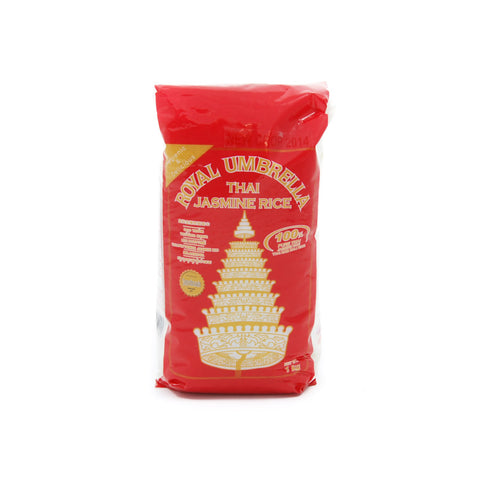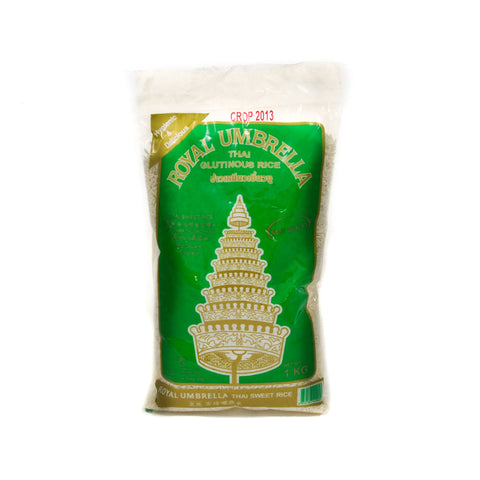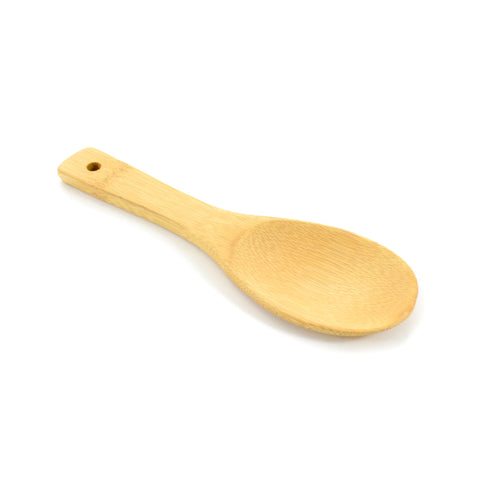Everything You Need To Know About Rice Cookers
by Holly Thomson

Are you looking to buy a rice cooker? This expert guide will explain exactly how rice cookers work, what you can cook in them, and which type of rice cooker is best for your kitchen.
Feeling inspired? Read How to make sticky rice in a rice cooker, and browse all rice cookers at Sous Chef to find the best model for you.
In this expert guide to rice cookers, Sous Chef food editor Holly Thomson speaks to Cantonese food writer and chef, Cherry Tang. To discover everything we need to know about using a rice cooker.
Cherry has cooked with rice cookers for many, many years. Throughout the following guide, she gives detailed insight into how she gets the best results from her rice cooker. She shares which rice cookers she likes best. And gives ideas for other recipes that can be cooked in a rice cooker.
"Most Hong Kong people nowadays would only know how to operate a rice cooker, but not the traditional way of cooking rice on a stove"

What is a rice cooker?
An electric rice cooker consists of a heating element, a large 'cooking bowl', and a thermostat. They will also include a measuring cup for your dry rice.
The rice cooker will have helpful capacity guidelines inside the cooking bowl - for perfect rice-to-water ratio. Rice cookers often come with a rice paddle too, to serve your rice.
A rice cooker is not only an appliance but also the centre of a family meal.
The rice cooker was invented to reliably make well-cooked rice, with minimal supervision. Today, rice cookers often have the added benefit of being able to keep cooked rice warm for several hours.
Cherry explains the significance of rice cookers in her home city, Hong Kong: “A rice cooker is not only an appliance but also the centre of a family meal. ‘Have you eaten rice’ is how we greet each other, and start a conversation."
Is it worth having a rice cooker?
Yes. A rice cooker is considered a kitchen essential in many parts of the world.
It would be more surprising to hear "I don’t own a rice cooker" rather than "I don’t know how to cook rice on a stove."
This is why it's worth having a rice cooker:
- Using a rice cooker frees up other kitchen time. You don't need to stand over a hob while your rice cooks. Instead, you can prep the other parts of your meal.
- Rice cookers give consistent results - and take away the variance between different heat sources, slight changes in cooking time, or quantities of rice and water.
- You can keep rice warm in a rice cooker for 12 hours - meaning your rice is always ready to serve. No need to time your rice perfectly alongside other parts of the meal.
- Rice cookers are also very versatile. Cherry says: "When I moved from Hong Kong to the UK as a student many years ago, I used my rice cooker for everything! I cooked instant noodles in it, I used it to have hot pot with friends, and I made countless one-pot meals with it."
You'll find rice cookers in many millions of kitchens across the world. Cherry explains: "Most Hong Kong people nowadays would only know how to operate a rice cooker, but not the traditional way of cooking rice on a stove.
It would be more surprising to hear "I don’t own a rice cooker", than "I don’t know how to cook rice on a stove."
How to use a rice cooker, in 4 simple steps
Using a rice cooker is easy! If you are using a basic rice cooker, you will likely have two buttons, which are typically ‘cook’ and ‘warm’.
A multi-functional rice cooker is slightly different. There are multiple buttons, and usually, it comes with a manual to guide you through each function.
Here's a step-by-step guide to the principles of using a simple two-setting rice cooker:
1. Measure your rice using the rice cup. Measure your rice to the top of the cup so that it's neatly level. You might want to over-fill initially, then neaten with your rice paddle to make it exactly level.

2. Tip your rice into the rice cooker. Simply add the dry rice into the bottom of your cooking bowl.

3. Add in the correct ratio of water, filling the cooking bowl to the chosen line. The internal measuring lines will correspond to the amount of rice you have used in your cup.

4. Turn the rice cooker to 'cook'. At this point, you can simply walk away, and wait for the rice cooker to alert you when your rice is ready to eat.

What are the different types of rice cookers (and which one should I choose?)
There are a few types of rice cooker to choose from: basic or multi-functional. Plus there are many different sizes available, depending on how many people you are feeding:
- Basic rice cookers are perfect for daily use, and often just have two settings ('cook', and 'warm').
- Advanced rice cookers come with extra features such as timers, slow-cooking settings and deep-frying settings.
- When it comes to sizes, rice cookers can range from 3-person capacity at about 500ml. To extremely large 25-person capacity at 4.6l. With many models in the middle.
Here are our recommendations for the best basic rice cooker, large rice cooker, and multi-functional rice cooker:
Best all-round, basic rice cooker
This Cuckoo electric rice cooker is a multi-purpose kitchen gadget that delivers light and fluffy rice, every time.
It produces enough rice to feed six people without taking up too much space in your cupboard or on your countertop and adds a lovely retro touch to your kitchen with its colour and design.
Take the guesswork out of rice cooking and serve perfect rice at dinner parties and family mealtimes.
The ‘warm’ setting will keep rice warm without overcooking it until you’re ready to serve.
Best multi-functional rice cooker
This premium quality Cuckoo rice cooker is ideal if you're looking for additional features in your rice cooker. It has 8 different settings, which includes cooking variations for different rice types: white, brown, sticky rice. Plus settings for re-heating rice safely.
Use this rice cooker for steaming vegetables, slow-cooking stews, and even making rice porridge.
Best large rice cooker
With space to cook enough rice for 25 people, this is an extremely large rice cooker. A great choice for professional kitchens and chefs. Despite being a very large capacity at 4.6litres, this rice cooker is still compact on the countertop. It measures just 38cm square. Which is a great use of kitchen space, considering it will serve 25 hungry people!
How to cook rice like an expert - using a rice cooker
Put simply, to use a rice cooker, all you need is rice and water – it's as straightforward as that.
But to use your rice cooker like an expert, you can include different ingredients and flavours to your dry rice. For instance try adding pandan leaves, ginger, garlic, or spices like turmeric and saffron.
Cherry says "For those who like bold flavours you can also try adding chopped Chinese sausages, bacon, soaked shiitake mushrooms, or even smoked mackerel."
Do rice cookers steam vegetables?
Absolutely. Many multi-functional rice cookers come with a steam basket. Just put your vegetables in there while the rice is cooking, and voilà – perfectly steamed vegetables without any extra effort. It's a convenient two-in-one feature that makes your rice cooker even more versatile in the kitchen.
“You can also try steaming a meat patty or a small fillet of fish using the same method!”
Rice cookers vs pots - which is better?
What is the real benefit of using a rice cooker?
Cherry adds her expert insight: "When it comes to time and efficiency, using a rice cooker is a no-brainer for day-to-day cooking.”
Below: See how the rice we cooked in our Cuckoo rice cooker in the Sous Chef kitchen is perfectly cooked, with each grain visible and distinct.

Here are the top benefits for using a rice cooker vs a pot on the stove:
- Rice cookers save time. With a rice cooker, it's as easy as hitting a button and letting it do its thing. No need to hover over the stove, saving you time for other kitchen tasks.
- You get consistent results with a rice cooker. Rice cookers ensure consistent results every time. No more worrying about sticky or undercooked rice – it's foolproof.
- More energy efficient. Rice cookers are designed to be energy-efficient. They use only the necessary amount of heat to cook, saving both time and electricity.
- You can 'set-and-forget'! Unlike pots that may require constant attention, a rice cooker is a set-and-forget appliance. Hit the button, go about your day, and return to perfectly cooked rice.
- No burned bottoms. Forget about scraping off burnt rice from the bottom of the cooking pot. Rice cookers eliminate the risk of burning, giving you a consistently enjoyable meal. But take note, this will still depend on how much water you will add to your rice.
- Rice cookers are versatile. “You can also try steaming a meat patty or a small fillet of fish using the rice cooker!” says Cherry.
Below: a close-up of the rice, ready to be left on the warming setting. So that you can focus on cooking the other elements of your meal.

How to clean and look after your rice cooker
- Wipe it down. After every use, give your rice cooker a quick wipe with a damp cloth. No need for fancy cleaning agents – keep it simple.
- Empty the residue. Don't forget to empty the leftover water from the rice cooker. It helps prevent any build-up or funky smells.
- Check the seal. If your rice cooker has a rubber seal, make sure to clean it regularly. A clean seal ensures a tight fit for efficient cooking.
- Avoid abrasive cleaning tools. When cleaning, steer clear of abrasive sponges or harsh cleaners. Gentle cleaning is all it needs. A little care goes a long way in keeping your rice cooker working like a charm.
Cherry says "Make sure the inside of the rice cooker (the induction bit) doesn’t have any residues as the heat from the next run will turn them into hard bits, which will scratch the outer layer of the metal rice bowl, affecting the rice cooker’s performance in the long run."
Expert tips for using your rice cooker
It may be easy to use, but you can make your rice cooker work even harder, by following these clever tips:
- Resist the urge to fill the rice cooker to the brim. Overloading can affect the cooking process and lead to unevenly cooked rice.
- If you're using a multi-functional rice cooker, take time to understand the manual. There may well be extra settings that you haven't discovered!
- After cooking your rice, let the it sit for a bit before fluffing. Skipping this step might give you stickier rice than you bargained for.
- Regular cleaning is key. Don't let remnants from previous meals hang around – they can affect the taste of your fresh batch.
- Stick carefully to the recommended rice-water ratio. Too much or too little water can impact the texture of your rice.
Which rice can I use in a rice cooker?
Thai Hom Mali rice has a subtle, fragrant flavour reminiscent of pandan leaves. Jasmine rice is a long-grain variety of rice originally from Thailand, and is also known as Thai fragrant rice.
Jasmine rice grains will cling together slightly when cooked but aren’t as sticky as glutinous rice. Serve jasmine rice alongside Thai curries or cook it in coconut milk for a fragrant rice pudding.
Glutinous rice is also called sticky rice. Read our guide to cooking sticky rice in a rice cooker here. This rice can be short or long - but the key difference is it's high starch content. Which leads to a less translucent cooked rice. Sticky rice can be sweet or savoury, and is most commonly eaten in Thailand as Mango Sticky Rice, for example.
Making sushi rice in a rice cooker is a great way to save time. Season your sushi rice with sushi vinegar after it is cooked. Then use your sushi rice to make whichever shaped sushi you prefer.
Here is a great recipe for making sushi, including seasoning your sushi rice. Plus a step-by-step guide to shaping classic maki rolls.

Using a rice paddle to serve rice
Rice paddle
A bamboo rice paddle is a great utensil for stirring and serving rice. The bamboo rice paddle – also known as a shamoji – can be used for stirring cooked sushi rice until it’s dry and sticky and cooled.
The bamboo rice paddle is also great for serving portions of rice. The flat edge means that you can cut and scoop a nice big portion, rather than struggling with a serving spoon.
You'll see that some rice paddles have bumpy surfaces. This is designed to stop the rice from sticking to the paddle surface.
And some have slight ridges along the sides, to prevent your rice from falling off the paddle.
Most rice cookers will include a rice paddle. But if you'd like an extra one, we recommend this lovely bamboo model above. It is slightly concave, which helps keep the rice on your paddle. And is sleek and smooth, so the rice naturally won't stick to the bamboo surface.
Want to keep reading? Shop all rice cookers at Sous Chef to find the best model for you, and take a look at our Buyer's Guide to rice, and how to cook it perfectly.









